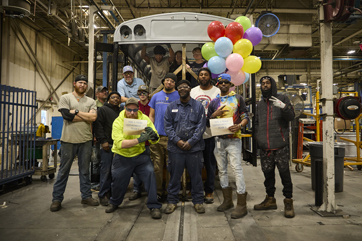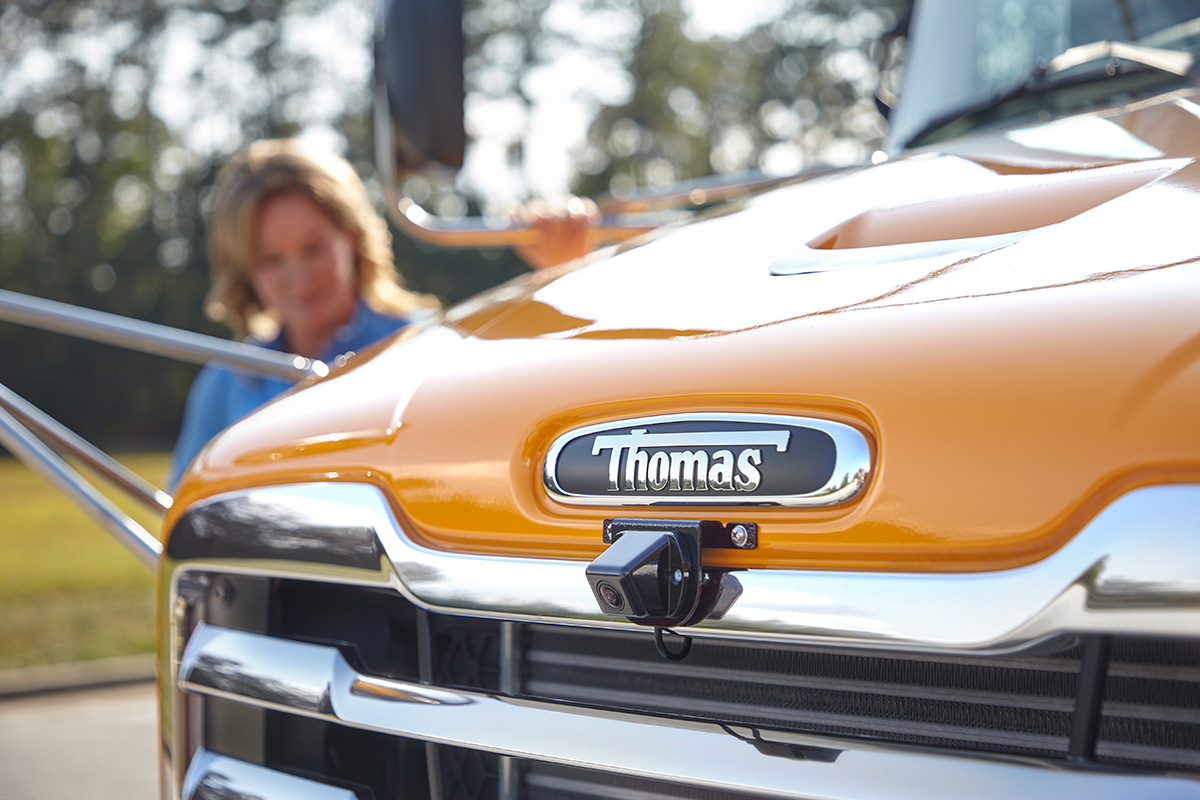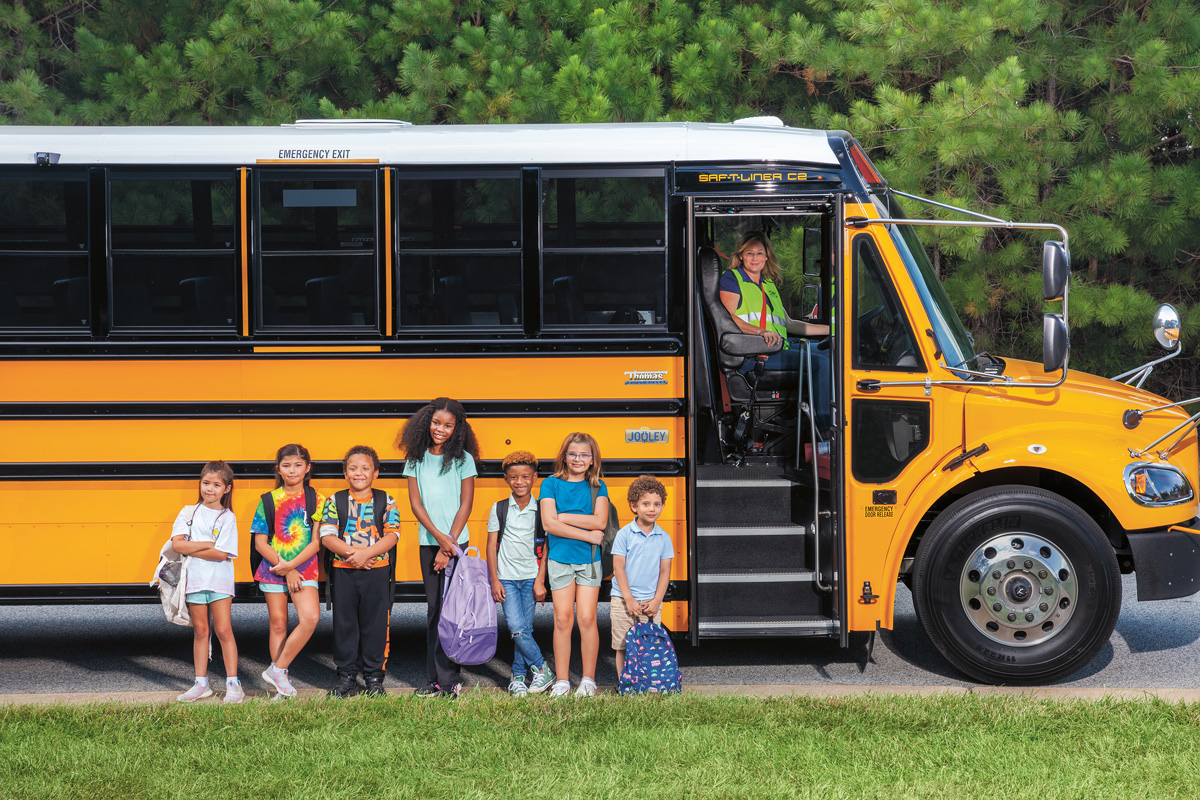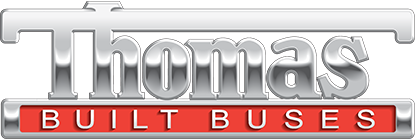
A behind-the-scenes look at our historic celebration and transition of the Type D legacy
It isn’t every day you get to celebrate a major milestone, so we’ve captured the iconic plant transition of our Type D production and commemorated the milestone in a video celebration. Chronicling the final steps of the last Type D bus to roll off the historic assembly line, the video features…

At Thomas Built Buses, we view safety as a journey, not a destination. Safety is at the core of everything we do—from our manufacturing processes to our testing protocols and focus on continuous innovation. It is more than just a feature; it’s an interconnected facet of all our operations.
Let’s look at how this commitment to safety is woven into every phase of our process, from…

What makes the electric Saf-T-Liner C2 Jouley school bus an excellent vehicle for today and the future? Our free Electric School Bus Curriculum answers this and more.
Today’s students are increasingly interested in electric vehicles and environmentally smart transportation options. This dynamic, professionally designed curriculum provides teachers with tools and lessons to increase…

In today’s rapidly evolving industrial landscape, sustainability has become a global focus. But what does that even mean? For Thomas Built Buses, it’s about defining our commitment to our organization, our industry and the communities we serve. While our electric school bus, the Saf-T-Liner® C2 Jouley®, and its many milestones (including the recent delivery of our 1,000th) often come to…

Funding opportunities and incentives for electric school bus purchases are now available across the United States and Canada for electric school bus capital costs and, in some instances, charging infrastructure as well. However, often a single grant or funding opportunity isn’t enough to cover the entire cost of an electric conversion.
When districts calculate the cost of a new electric school bus and charging infrastructure, sometimes the lack of funding in their area deters them from investigating electric school buses further. But the good news is that a single grant isn’t the only way to fund a new electric school bus. In fact, here at Thomas Built Buses, we advise many of our customers to stack their funding opportunities, seek outside partnerships and consider appropriate financing that may help to bridge the funding gap.
Where to locate electric school bus funding
Funding for an electric school bus can come in the form of government grants, purchase incentives, utility provider funding, and even some special financing options. With the increased focus on electric mobility, an increasing number of funding and grant opportunities are becoming available. What’s more, funding opportunities, such as DERA grants and Volkswagen Funding, for mixed fuel types now offer larger allocations to those seeking the funding for electric vehicle purchases. But when a district locates funding, they shouldn’t stop there. Often, more than one type of funding can be “stacked” or applied to an electric school bus purchase, bringing down the cost for districts even more.
“We realize that locating funding takes persistence and can be difficult for many districts, which is why all of our Thomas Built Buses’ dealers have tools at their disposal with which they can identify current and even future funding opportunities in their state, minimizing the legwork for customers,” said Mark Childers, powertrain and technology sales manager for Thomas Built Buses.
Dealerships like those for Thomas Built Buses now have up-to-date databases and search queries to identify funding opportunities available to districts, grant dollar allocation amounts, and application closing dates. Dealers can even provide a heads-up to customers that funding may soon be available even if the funding period has not officially opened yet. Upon locating funding opportunities, dealerships can also assist districts with grant writing and application support through Thomas Built Buses’ Electric Bus Authority program.
Partnerships to bridge the funding gap
In addition to funding opportunities, potential partnerships with local utility providers or charger manufacturers could also help to offset EV conversion costs. Many utility providers are now starting to put together make-ready programs that will help school districts fund complete charging infrastructure and/or charging components. And as we are starting to see with some mass school bus purchases, like that of Dominion Energy, some utility providers are purchasing school buses outright for schools or providing grants for the purchase of buses and charging infrastructure.
“When working with a utility provider, service provider or charger manufacturer, there are many creative ways share the cost of the bus and infrastructure,” adds Childers. “In fact, some charger manufacturers offer attractive financing options for their charging equipment as well. Determining possible partnerships early, and in tandem with your local dealer, could uncover financing and funding opportunities that may not be obvious.”
To locate possible partnerships, districts can start the conversations with their local dealers. Dealers like those at Thomas Built Buses, as well as representatives of the Electric Bus Authority can connect school districts with partners who can assist with integrating electric school buses into a fleet as well as assist with identifying funding opportunities.
“Starting the conversation with utility and service providers early is key,” said Childers. “We advise our customers to start to form these partnerships when a school district is first considering conversion to electric. And if a school district doesn’t know where to start, we have working relationships with a number of these providers and can make the introductions on behalf of our customers. Planning electric school bus conversion together, from the get-go, will allow a school district to optimize funding available to them and streamline the conversion process.”
Electric school bus financing
Finally, for districts who may still have a funding gap after all available funding options have been applied, special financing specifically for electric school bus purchases are available. Many districts are familiar with customizable municipal financing programs, but most are unaware that they can now apply for municipal financing for EV purchases to fund the electric school bus along with the charging infrastructure.
“Many of our customers are surprised that we offer financing options for school bus capital costs as well as charging infrastructure,” says Keith Courtney, national sales manager at Daimler Truck Financial. “By working collaboratively with our customers and the Thomas Built Buses Electric Bus Authority experts, our customers can afford to make the switch to electric. Personalized, one-on-one service is key to creating unique financing programs for each customer. It’s something that helps set us apart from the competition.”
While some districts may be leery of financing an electric school bus, it’s important to remember that financing a new bus upfront can actually help a district save money in the long run, especially if financing is just bridging the funding gap. It is estimated that electric school buses cost less than half of what it would cost to run an old diesel school bus based on lower fuel costs and less required maintenance. Even with financing, an electric school bus could be the best long-term solution to a districts’ already tight budget.
To learn more about how to find funding to add electric school buses to your fleet, contact a Thomas Built Buses Electric Bus Authority consultant, your local dealer or visit Daimler Truck Financial.
